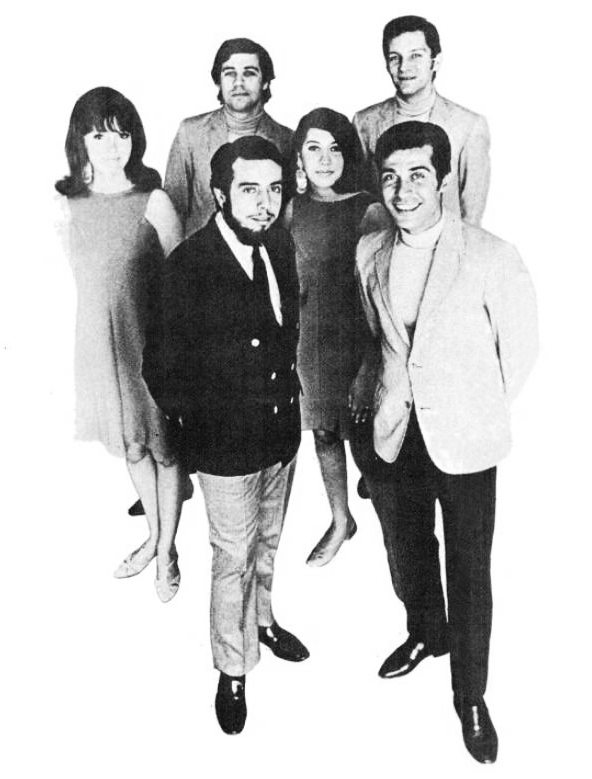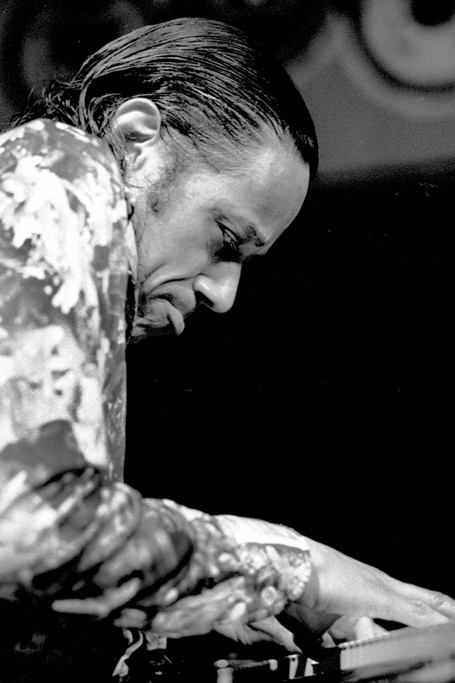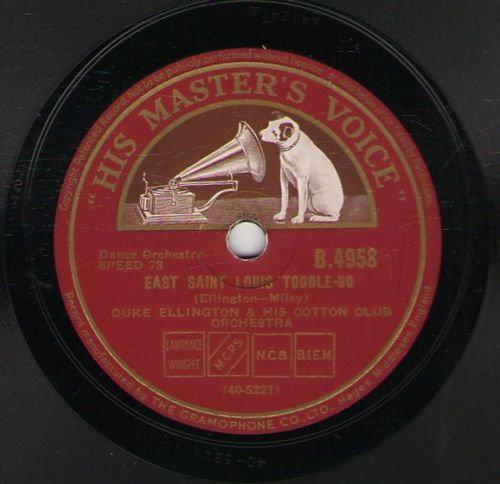|
Dance Moderno
''Dance Moderno'' is the first album by Sérgio Mendes. It is purely an instrumental album. Track listing # "Oba-lá-lá" (João Gilberto) # " Love for Sale" ( Cole Porter) # "Tristeza de Nós Dois" (Durval Ferreira & Bebeto) # "What Is This Thing Called Love?" (Cole Porter) # "Olhou Para Mim" (Ed Lincoln & Silvio César) # "Satin Doll" ( Duke Ellington & Billy Strayhorn) # "Tema Sem Palavras" (Maurício Einhorn & Durval Ferreira) # "On Green Dolphin Street" ( Bronislau Kaper, Ned Washington) # "Outra Vez" (Antônio Carlos Jobim) # "Disa" (Maurício Einhorn & Johnny Alf) # "Nica's Dream" (Horace Silver Horace Ward Martin Tavares Silver (September 2, 1928 – June 18, 2014) was an American jazz pianist, composer, and arranger, particularly in the hard bop style that he helped pioneer in the 1950s. After playing tenor saxophone and piano at sc ...) # "Diagonal" (Maurício Einhorn & Durval Ferreira) References Sérgio Mendes albums 1961 debut albums Instrume ... [...More Info...] [...Related Items...] OR: [Wikipedia] [Google] [Baidu] |
Sérgio Mendes
Sérgio Santos Mendes (; born February 11, 1941) is a Brazilian musician. His career took off with worldwide hits by his group Brasil '66. He has over 55 releases and plays bossa nova heavily crossed with jazz and funk. He was nominated for an Oscar for Best Original Song in 2012 as co-writer of the song "Real in Rio" from the animated film ''Rio''. Mendes is a unique example of a Brazilian musician primarily known in the United States, where his albums were recorded and where most of his touring took place. Mendes is married to Gracinha Leporace, who has performed with him since the early 1970s. Mendes has also collaborated with many artists through the years, including The Black Eyed Peas, with whom he re-recorded in 2006 a version of his breakthrough hit " Mas que Nada". Biography Early career Mendes was born in Niterói, Brazil, the son of a physician. He attended the local conservatory with hopes of becoming a classical pianist. As his interest in jazz grew, he starte ... [...More Info...] [...Related Items...] OR: [Wikipedia] [Google] [Baidu] |
Billy Strayhorn
William Thomas Strayhorn (November 29, 1915 – May 31, 1967) was an American jazz composer, pianist, lyricist, and arranger, who collaborated with bandleader and composer Duke Ellington for nearly three decades. His compositions include "Take the 'A' Train", "Chelsea Bridge", "A Flower Is a Lovesome Thing", and " Lush Life". Early life Strayhorn was born in Dayton, Ohio, United States. His family soon moved to the Homewood section of Pittsburgh, Pennsylvania. However, his mother's family came from Hillsborough, North Carolina, and she sent him there to protect him from his father's drunken sprees. Strayhorn spent many months of his childhood at his grandparents' house in Hillsborough. In an interview, Strayhorn said that his grandmother was his primary influence during the first ten years of his life. He became interested in music while living with her, playing hymns on her piano, and playing records on her Victrola record player. Return to Pittsburgh and meeting Ellington S ... [...More Info...] [...Related Items...] OR: [Wikipedia] [Google] [Baidu] |
Sérgio Mendes Albums
Sergius is a male given name of Ancient Roman origin after the name of the Latin ''gens'' Sergia or Sergii of regal and republican ages. It is a common Christian name, in honor of Saint Sergius, or in Russia, of Saint Sergius of Radonezh, and has been the name of four popes. It has given rise to numerous variants, present today mainly in the Romance (Serge, Sergio, Sergi) and Slavic languages (Serhii, Sergey, Serguei). It is not common in English, although the Anglo-French name Sergeant is possibly related to it. Etymology The name originates from the Roman ''nomen'' (patrician family name) ''Sergius'', after the name of the Roman ''gens'' of Latin origins Sergia or Sergii from Alba Longa, Old Latium, counted by Theodor Mommsen as one of the oldest Roman families, one of the original 100 ''gentes originarie''. It has been speculated to derive from a more ancient Etruscan name but the etymology of the nomen Sergius is problematic. Chase hesitantly suggests a connectio ... [...More Info...] [...Related Items...] OR: [Wikipedia] [Google] [Baidu] |
Horace Silver
Horace Ward Martin Tavares Silver (September 2, 1928 – June 18, 2014) was an American jazz pianist, composer, and arranger, particularly in the hard bop style that he helped pioneer in the 1950s. After playing tenor saxophone and piano at school in Connecticut, Silver got his break on piano when his trio was recruited by Stan Getz in 1950. Silver soon moved to New York City, where he developed a reputation as a composer and for his bluesy playing. Frequent sideman recordings in the mid-1950s helped further, but it was his work with the Jazz Messengers, co-led by Art Blakey, that brought both his writing and playing most attention. Their ''Horace Silver and the Jazz Messengers'' album contained Silver's first hit, " The Preacher". After leaving Blakey in 1956, Silver formed his own quintet, with what became the standard small group line-up of tenor saxophone, trumpet, piano, bass, and drums. Their public performances and frequent recordings for Blue Note Records increased Silver ... [...More Info...] [...Related Items...] OR: [Wikipedia] [Google] [Baidu] |
Nica's Dream
"Nica's Dream" is a jazz standard composed by Horace Silver in 1954. It is one of many songs written in tribute to jazz patroness Pannonica de Koenigswarter. The song was first recorded by the Jazz Messengers in 1956, and has since been recorded by many other artists. It features jazz melodic minor harmony with prominent minor-major 7th chords. Its first studio recording by Silver was on the ''Horace-Scope ''Horace-Scope'' is an album by jazz pianist Horace Silver released on the Blue Note Records, Blue Note label in 1960 featuring performances by Silver with Blue Mitchell, Junior Cook, Gene Taylor (bassist), Gene Taylor, and Roy Brooks. Recepti ...'' album. Thomas Owens describes the composition – "The trumpet melody, one of the great themes in jazz literature, is a 64-measure song in aaba form. The accompaniment for the a sections is in a Latin style based on ..one of Silver's favorite patterns. In the bridge the accompaniment alternates between backbeat chordal punctuati ... [...More Info...] [...Related Items...] OR: [Wikipedia] [Google] [Baidu] |
Johnny Alf
Alfredo José da Silva (May 19, 1929 – March 4, 2010), popularly known as Johnny Alf, was a Brazilian musician, sometimes known as the "Father of Bossa Nova".Larry Rohter"Johnny Alf, a Father of Bossa Nova, Dies at 80" ''The New York Times'', March 11, 2010. Alf was born in Vila Isabel, Rio de Janeiro, and began playing piano at age 9. His father died when he was 3 and he was raised by his mother, who worked as a maid to raise him. He attended Colégio Pedro II, receiving support from his mother's employers. He played in nightclubs in the Copacabana neighborhood of Rio, where he was noticed by later bossa nova pioneers. His first single, "Falseta" was released in 1952, with a debut album following in 1961. Over his career, he recorded nine albums and appeared on nearly fifty others. He died in 2010, aged 80, from prostate cancer. Early life Johnny Alf (b. Alfredo José da Silva) was born on May 19, 1929, in Vila Isabel, Rio de Janeiro, Brazil.Oxford Music Online, par. 1. Al ... [...More Info...] [...Related Items...] OR: [Wikipedia] [Google] [Baidu] |
Antônio Carlos Jobim
Antônio Carlos Brasileiro de Almeida Jobim (25 January 1927 – 8 December 1994), also known as Tom Jobim (), was a Brazilian composer, pianist, guitarist, songwriter, arranger, and singer. Considered one of the great exponents of Brazilian music, Jobim internationalized bossa nova and, with the help of important American artists, merged it with jazz in the 1960s to create a new sound, with popular success. As a result, he is sometimes known as the "father of bossa nova". Jobim was a primary force behind the creation of the bossa nova style, and his songs have been performed by many singers and instrumentalists internationally since the early 1960s. In 1965, the album ''Getz/Gilberto'' was the first jazz record to win the Grammy Award for Album of the Year. It also won Best Jazz Instrumental Album – Individual or Group and Best Engineered Album, Non-Classical. The album's single '" Garota de Ipanema (The Girl from Ipanema)'", composed by Jobim, has become one of the most r ... [...More Info...] [...Related Items...] OR: [Wikipedia] [Google] [Baidu] |
Ned Washington
Ned Washington (born Edward Michael Washington, August 15, 1901 – December 20, 1976) was an American lyricist born in Scranton, Pennsylvania. Life and career Washington was nominated for eleven Academy Awards from 1940 to 1962. He won the Best Original Song award twice: in 1940 for " When You Wish Upon a Star" in ''Pinocchio'' and in 1952 for " High Noon (Do Not Forsake Me, Oh My Darlin')" in '' High Noon''. Washington had his roots in vaudeville as a master of ceremonies. Having started his songwriting career with ''Earl Carroll's Vanities'' on Broadway in the late 1920s, he joined the ASCAP in 1930. In 1934, he was signed by MGM and relocated to Hollywood, eventually writing full scores for feature films. During the 1940s, he worked for a number of studios, including Paramount, Warner Brothers, Disney, and Republic. During these tenures, he collaborated with many of the great composers of the era, including Hoagy Carmichael, Victor Young, Max Steiner, and Dimitri Tiomkin. ... [...More Info...] [...Related Items...] OR: [Wikipedia] [Google] [Baidu] |
Duke Ellington
Edward Kennedy "Duke" Ellington (April 29, 1899 – May 24, 1974) was an American jazz pianist, composer, and leader of his eponymous jazz orchestra from 1923 through the rest of his life. Born and raised in Washington, D.C., Ellington was based in New York City from the mid-1920s and gained a national profile through his orchestra's appearances at the Cotton Club in Harlem. A master at writing miniatures for the three-minute 78 rpm recording format, Ellington wrote or collaborated on more than one thousand compositions; his extensive body of work is the largest recorded personal jazz legacy, and many of his pieces have become standards. He also recorded songs written by his bandsmen, such as Juan Tizol's " Caravan", which brought a Spanish tinge to big band jazz. At the end of the 1930s, Ellington began a nearly thirty-year collaboration with composer-arranger-pianist Billy Strayhorn, whom he called his writing and arranging companion. With Strayhorn, he composed multipl ... [...More Info...] [...Related Items...] OR: [Wikipedia] [Google] [Baidu] |
Bossa Nova
Bossa nova () is a style of samba developed in the late 1950s and early 1960s in Rio de Janeiro, Brazil. It is mainly characterized by a "different beat" that altered the harmonies with the introduction of unconventional chords and an innovative syncopation of traditional samba from a single rhythmic division. The "bossa nova beat" is characteristic of a samba style and not of an autonomous genre. According to the Brazilian journalist Ruy Castro, the bossa beat – which was created by the drummer Milton Banana – was "an extreme simplification of the beat of the samba school", as if all instruments had been removed and only the tamborim had been preserved. In line with this thesis, musicians such as Baden Powell (guitarist), Baden Powell, Roberto Menescal, and Ronaldo Bôscoli also claim that this beat is related to the tamborim of the samba school. One of the major innovations of bossa nova was the way to synthesize the rhythm of samba on the classical guitar. According to mu ... [...More Info...] [...Related Items...] OR: [Wikipedia] [Google] [Baidu] |
Satin Doll
"Satin Doll" is a jazz standard written by Duke Ellington and Billy Strayhorn with lyrics by Johnny Mercer. Written in 1953, the song has been recorded by Ella Fitzgerald, 101 Strings, Terry Callier, and Nancy Wilson. Its chord progression is well known for its unusual use of chords and opening with a ii-V-I turnaround. Background Johnny Mercer was often asked to write lyrics to already popular songs. Lyrics to "Satin Doll" were written after the song was a hit in its instrumental version. Ellington used "Satin Doll" as the closing number in most of his concerts. Other versions * Duke Ellington – ''Capitol Sessions 1953–1955'' (1953) * The Gaylords – 1958 * Bill Doggett – ''Salute to Duke Ellington'' (King, 1959) * Peggy Lee / George Shearing – ''Beauty And The Beat!'' (Capitol Records, 1959) * The Coasters – ''One by One'' (1960) * Harry James – ''Harry James...Today'' (MGM, 1960) * Ella Fitzgerald – ''Ella in Hollywood'' (1961) * McCoy Tyner – ''Night ... [...More Info...] [...Related Items...] OR: [Wikipedia] [Google] [Baidu] |





